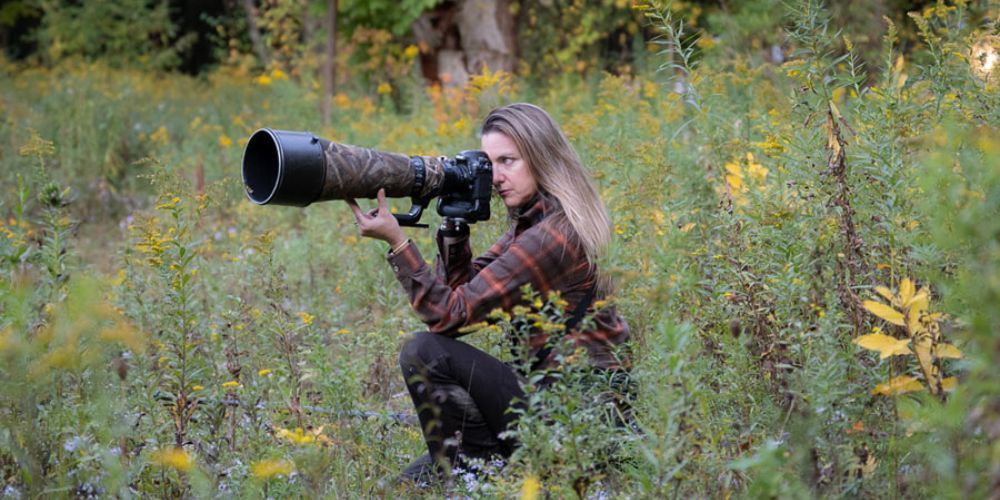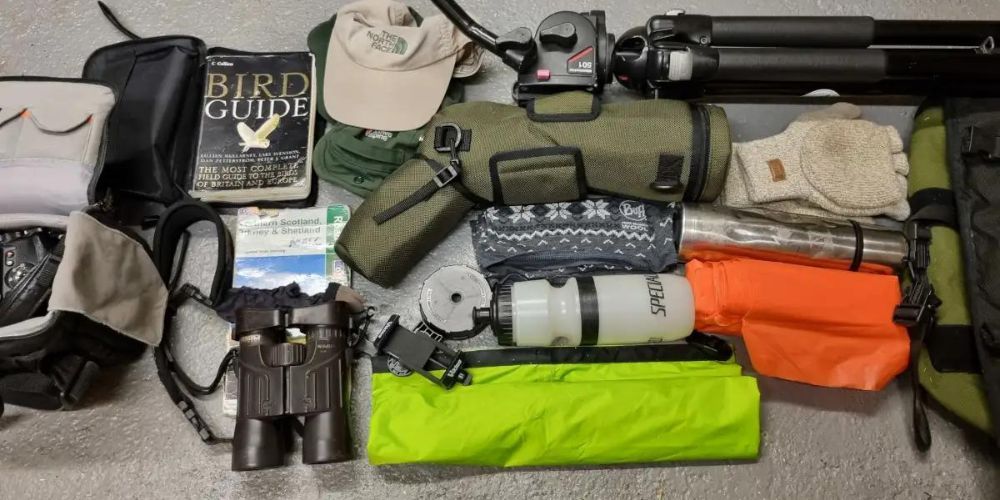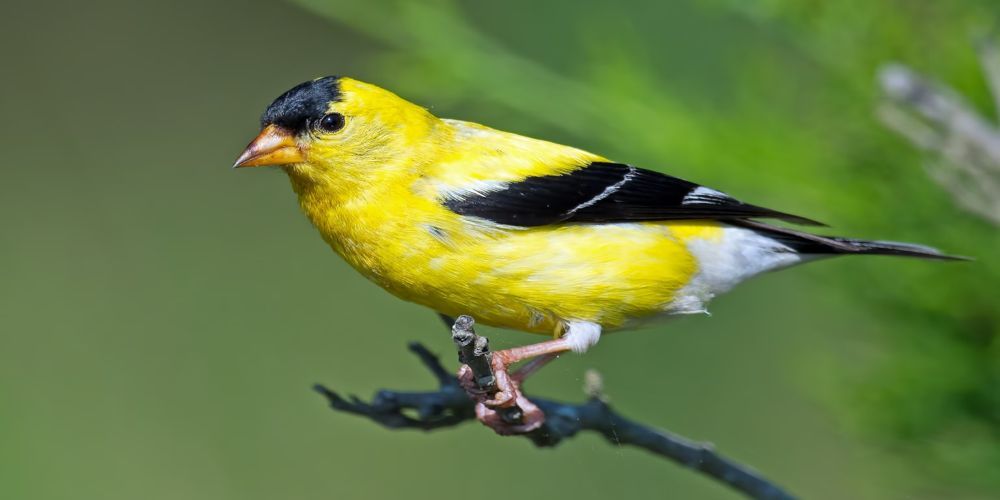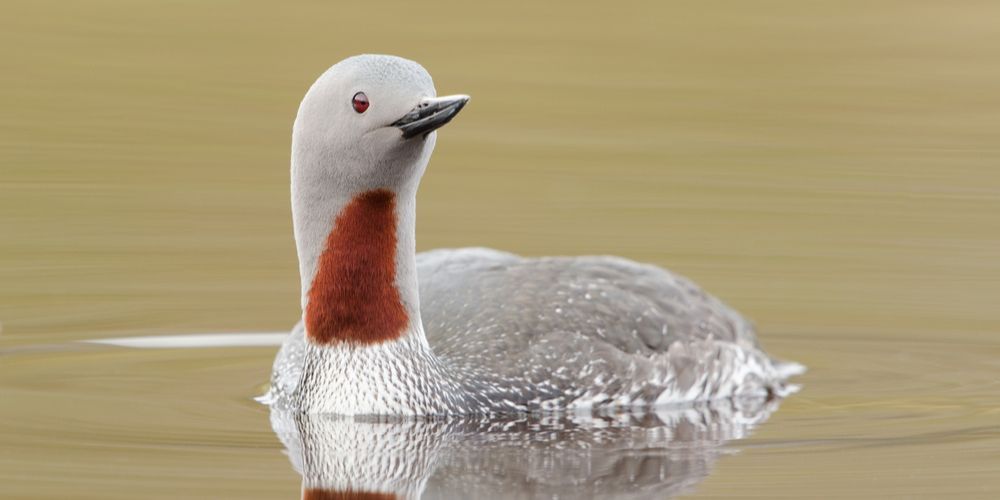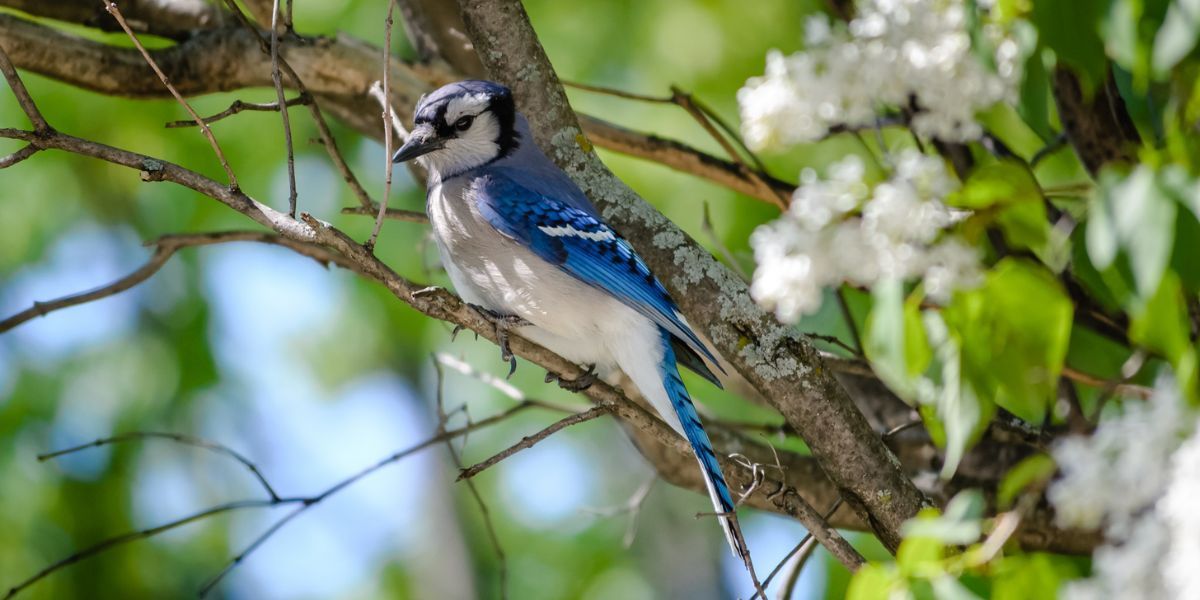Birding Binoculars: A Complete Guide to Choosing the Perfect Pair for Bird Watching
Good birding binoculars bring nature up close. Brands like Zeiss, Nikon, Swarovski, or Vortex offer great choices. Standout models not only provide sharp, vibrant images, but also feel just right in your hands. Ready to fathom feathers? Let's examine some top picks.
When selecting birding binoculars, it's crucial to consider magnification, objective lens diameter, field of view, and close focus distance. Additionally, ergonomic design and weight play a vital role in ensuring comfortable and extended use. Be sure to explore reputable brands such as Zeiss, Nikon, Swarovski, and Vortex and try out different models to find the best fit for your personal preference and budget.
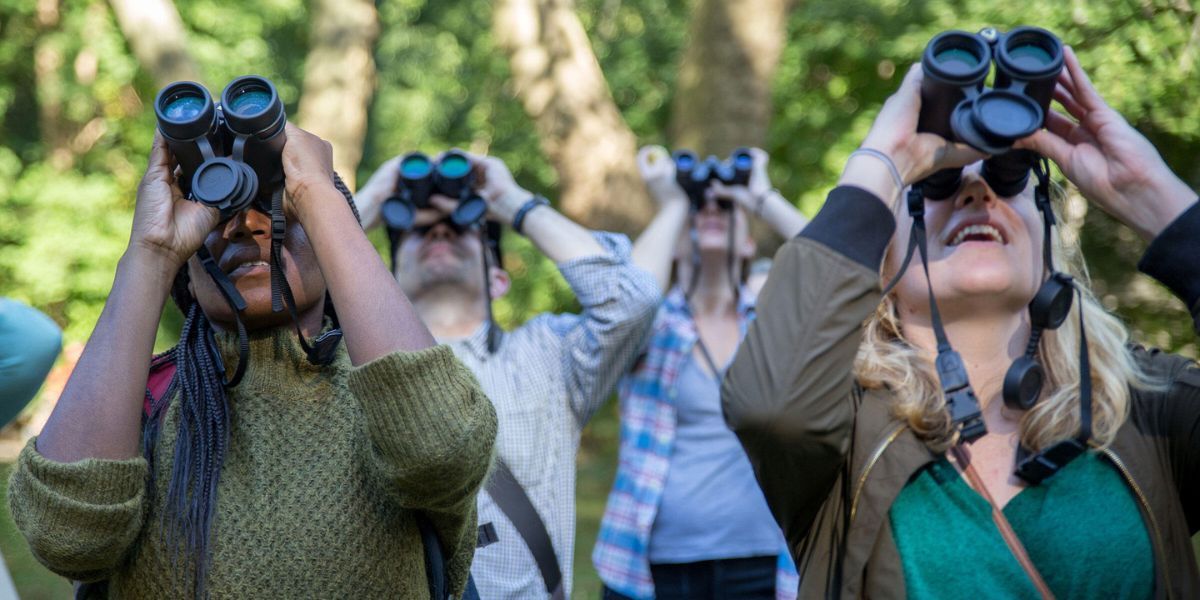
Best Birding Binoculars
Selecting the perfect pair of birdwatching binoculars can be both exciting and overwhelming. With a myriad of options available, it's important to narrow down your choices based on quality, performance, and suitability for different environments. When it comes to renowned brands that consistently provide top-notch optics and durable construction, names like Zeiss, Nikon, Swarovski, and Vortex rise to the forefront.
These brands have earned their stellar reputations by delivering exceptional optical performance that caters to the exacting demands of birding enthusiasts. Their binoculars are designed not only to provide stunning clarity and color rendition but also to withstand the rigors of outdoor use. It's this commitment to quality and reliability that makes them stand out in the world of birding optics.
When you're investing in a pair of binoculars for bird watching, you want an instrument that can deliver crisp, vivid images while feeling comfortable in your hands. This combination of optical excellence and ergonomic design is what sets these top brands apart from the competition.
For instance, Zeiss is celebrated for its wide field of view and exceptional image sharpness, making it a popular choice among serious birders who value precise visual acuity when observing avian wonders. On the other hand, Nikon boasts a long-standing reputation for crafting user-friendly binoculars with excellent color fidelity, a critical feature for accurately identifying different species of birds based on their feather hues.
In addition to optical prowess, these leading brands place emphasis on durability—ensuring that their products can withstand harsh outdoor conditions encountered during extensive birding expeditions.
Our in-depth reviews feature comprehensive insights into the performance and ergonomics of these top-rated birding binoculars, offering valuable guidance to help you make an informed decision based on your unique birding needs and preferences.
As we set our sights on the finest tools for avian observation, it's time to delve into our expert choices tailored exclusively for passionate birdwatchers.
Our Top Picks
When it comes to birding binoculars, a few models stand out distinctly due to their remarkable optical prowess, durability, and user-friendly design. Among them are the Zeiss Terra ED 8x42, Nikon Monarch 5 8x42, Swarovski EL 8.5x42, and Vortex Diamondback HD 10x42. These models have garnered immense praise from both novices and seasoned birders for their outstanding features.
The Zeiss Terra ED 8x42 has been applauded for its exceptional image quality and lightweight yet robust construction, making it a popular choice for birdwatchers who appreciate precision and reliability. The Nikon Monarch 5 8x42 is revered for its sharp and vibrant images, as well as its rugged yet sleek design that ensures a comfortable grip during extended use. On the other hand, the Swarovski EL 8.5x42 has earned accolades for its superior optical performance, ergonomic design, and impressive field of view, providing birding enthusiasts with an unparalleled viewing experience. Lastly, the Vortex Diamondback HD 10x42 is celebrated for its crisp, colorful imagery, excellent low-light performance, and rugged build that can withstand varied environmental conditions.
Our website offers comprehensive reviews and detailed comparisons of these top picks, providing in-depth insights into their features, functionalities, and suitability for different birding environments. Whether you're a beginner looking for your first pair of binoculars or an experienced birder seeking an upgrade, our expert evaluations and user feedback will assist you in making an informed purchasing decision.
Now that we've covered our top picks for birding binoculars and highlighted their standout attributes, let's explore the specific features and benefits that make these models exceptional choices for bird watchers around the world.
Main Features to Look For - Magnification and Objective Lenses
When it comes to birdwatching, having the right magnification can make all the difference. Magnification is what brings birds and their finer details closer without disturbing them. Binoculars with magnifications in the range of 8x to 10x strike an ideal balance between image stability and field of view.
Consider opting for models with zoom features if you want adjustable magnification while observing birds at varying distances. An 8x magnification provides a wider field of view and is easier to keep steady, making it suitable for tracking fast-moving birds. On the other hand, 10x magnification allows for more detailed observations of distant or smaller birds but may require a steadier hand or a tripod in prolonged use situations.
Objective Lens Diameter
The objective lens diameter plays a crucial role in determining how well your binoculars perform in terms of light-gathering ability. For optimum birding experiences, an objective lens diameter of at least 42mm is recommended to ensure brighter and clearer images even in low-light conditions. Larger objective lenses gather more light, resulting in brighter images, particularly during dawn or dusk when birds are most active.
It’s worth noting that larger objective lenses contribute to heavier and bulkier binoculars, which might impact comfort during extended birdwatching sessions or while hiking through nature to spot diverse bird species. The ideal situation would be to find binoculars with the largest possible objective lens diameter that maintains reasonable portability and comfort.
Exceptional light-gathering ability comes in handy when spotting elusive owls or other birds during low-light conditions or darker environments within dense trees or shrubs. A wider field of view provided by these lenses allows for easier tracking of fast-moving birds across the skies or through various landscapes.
Keep in mind that close focus distance is just as important as magnification and objective lenses. It determines how close you can get to your subjects while maintaining sharp focus. These factors together combine to create an optimal birding experience allowing for detailed views of both nearby and distant birds.
Now, let's further explore how optics contribute to the birdwatching experience by investigating the critical aspects of field of view and close focus range.
Field of View and Close Focus Range
When you head out with your binoculars for bird watching, being able to easily track fast-moving birds and take in an unobstructed view is crucial. This is where the field of view comes into play. Imagine scanning the skies or a vast expanse of a marshland, wanting to capture every detail without constantly adjusting your binoculars. A wider field of view allows for just that—an expansive, encompassing vista that makes bird watching a seamless, immersive experience.
For those unfamiliar, the field of view indicates how wide an area you can see through your binoculars at a specific distance. Typically measured in feet at a certain distance, it reflects the width of the observable area when looking through the binoculars. Opting for a wider field of view ensures you can comfortably take in more of nature's wonders, effortlessly following birds across the sky or through dense foliage without missing a beat.
The Significance
The significance of a broader field of view cannot be overstated when it comes to birding. Imagine witnessing an elusive warbler flitting amongst leaves or a raptor gliding high above with every detail enhanced by an unrestricted, wider picture. Professional ornithologists and enthusiasts alike often emphasize the importance of this aspect in their preferred binoculars.
A seasoned birder will tell you that it is not just about spotting birds; it's about capturing the entire scene—their environment, their movements, and interactions. A wide field of view allows you to soak in all these details without feeling confined.
Close Focus Distance
Moving on to another crucial feature—close focus distance—let's consider the thrill of observing nearby birds in intricate detail. The close focus range is imperative for those intimate moments when birds are up close and personal—a warbler hopping through branches or a hummingbird gracefully sipping nectar from a flower.
The close focus distance denotes how near you can bring your binoculars to an object and still maintain sharp focus. It serves as a defining factor for focused observation at relatively short distances, providing vivid clarity to even the most minute features.
Enhanced Birding Experiences
Consider finding yourself face-to-face with a tiny wren perched merely a few feet away or admiring the delicate patterns on a butterfly's wings from close quarters. Binocular models with impressive close focus capabilities enrich these experiences manifold, allowing you to revel in nature's intricacies with unparalleled clarity.
It is during these moments that having an exceptional close focus range truly becomes invaluable—a testament to the immersive delight that bird watching offers in such intimate encounters.
Understanding these vital features equips us with invaluable insights when selecting our perfect birding companion—the binoculars that not only enhance our bird watching but also transport us into enthralling avian encounters like never before.
Accessories That Enhance Birding
When it comes to birding, having the right accessories can make a world of difference. Let's take a closer look at the essential accessories that can enhance your birding binoculars and overall bird watching experience.
Comfortable Neck Straps and Harnesses
Imagine embarking on a lengthy birding expedition with uncomfortable neck straps or feeling the strain of heavy binoculars hanging around your neck. This discomfort can quickly take away from the joy of bird watching. Investing in a comfortable and adjustable neck strap or harness can significantly reduce neck strain, preventing discomfort during extended use. These accessories also distribute the weight of the binoculars across your upper body, making long hours of birding more enjoyable and less fatiguing.
Lens Cleaning Kits
Dust, dirt, and smudges on the binocular lenses can obstruct your view, impacting the clarity and quality of your bird watching experience. A lens cleaning kit, comprising a lens cloth, cleaning solution, and brush, is essential for maintaining optical clarity. Regular cleaning ensures that you can capture crisp and vibrant images of birds without any visual hindrances.
Tripod Adapters for Stable Viewing
A stable viewing platform is crucial for steady observation, especially when observing distant or small birds. A tripod adapter allows you to attach your binoculars to a tripod, providing stability for extended viewing sessions. This accessory minimizes hand tremors and fatigue, enabling you to focus on the intricate details of avian behavior without any distractions.
Carrying Case for Convenience and Protection
Whether you are exploring local birding hotspots or embarking on a wilderness adventure, a durable carrying case offers protection and convenience for transporting your binoculars during birding excursions. It shields your binoculars from unexpected impacts, moisture, and dust while providing easy access when you spot an elusive bird.
For instance, if you're hiking to reach a prime birdwatching location or navigating through dense foliage, a suitable carrying case ensures that your binoculars remain secure and well-protected throughout the journey.
By incorporating these accessories into your birding toolkit, you can enhance your comfort, versatility, and overall satisfaction while immersing yourself in the captivating world of bird watching.
Equipped with these essential accessories, you'll be fully prepared to embark on an enchanting avian adventure, ready to elevate your bird watching experiences to new heights.

Adjusting Your Binoculars
One size doesn't fit all when it comes to binoculars. They need to be set to suit your eyesight because everyone's eyes are different. If you share binoculars with someone and then use them later, you might find that they're not set right for your eyes anymore. Fortunately, making the right adjustments isn't hard – and it's a great way to ensure that you're getting the most out of your birding adventure.
Diopter Adjustment
The diopter adjustment is how you can make sure each eyepiece works well for your eyes. It's like putting on glasses or contact lenses - the settings help correct any differences in your visual clarity between your left and right eye.
This step is particularly important if you wear glasses or share the binoculars with others who do. Because, just like these grand lenses, they have to be focused properly and even differently according to how good our vision is.
To get the perfect setting:
- Look through the right eyepiece with it - alone.
- Then close the right eye and adjust using the central focusing wheel.
TIP: Remember not to change this setting again once you've found what's just right for you unless someone else uses the binoculars too and adjusts it back! Be mindful and keep an eye on it.
Interpupillary Distance
Interpupillary distance? It might sound like a jumble of big words, but it's very basic. This setting is about how far apart your eyes are from each other and how well aligned with each lens you are.
If you don’t get this bit right, your view could be blurry, out-of-focus, and might even cause headaches if your eyes have to strain too much!
Here's what to do:
- Hold your binoculars up to your eyes.
- Use the central hinge to move both barrels closer together or farther apart until you see a single, clear circle of vision.
It's easy once you know how! Don't forget that once you find this sweet spot, lock it in place by ensuring that the hinge stays there.
Remember—these are personal preferences and ensuring these features are set correctly allows for a comfortable viewing experience. Take the time to adjust both these settings perfectly as per your comfort level and visual needs.
Understanding how to tailor your binoculars for optimal performance is crucial for an enjoyable birding experience. Now let’s turn our attention to the importance of personal preference when selecting binoculars tailored specifically for you.
Importance of Personal Preference in Choosing Binoculars
Choosing the right birding binoculars is a deeply personal process. It isn't just about finding a pair that will work; it's about finding one that feels right in your hands and suits your individual birdwatching style. The way binoculars feel against your face, the weight in your hands, and how easy they are to adjust all contribute to a more enjoyable and successful bird watching experience.
Some may think that all binoculars are created equal, but when it comes to birdwatching, one size definitely doesn't fit all. Imagine holding a heavy pair of binoculars for hours on end—your arms might start to feel like they're made of lead! If the straps aren’t comfortable or the eyecups don’t work well with eyeglasses, you might end up feeling sore rather than fulfilled after a day of birding.
That's why it's crucial to consider personal preferences when making this important decision. When you find a pair that feels right and holds clear images without straining your eyes, birdwatching becomes an entirely different experience. Ergonomics and comfort are key factors in enjoying extended periods of birdwatching; binoculars should feel both balanced and natural in your hands without causing fatigue. Weight plays a significant role too, as lighter models are preferred for long excursions while heavier ones provide better image stability.
The Influence of Grip Comfort
Believe it or not, even the grip can make a substantial difference. Binoculars with grips that feel secure in your hands and allow for steady handling help ensure you won't miss those quick movements by feathered friends. If the grip is too slippery or uncomfortable to hold, you'll begin to lose focus on the beauty around you.
Take for instance someone who prefers sturdier, rubber-armored construction that can withstand diverse weather conditions. Pairing this with a tight grip ensures steady navigation over rugged terrains and through unpredictable weather patterns.
Recognizing the impact of personal preferences is equally as important as understanding technical specifications when selecting the perfect pair of binoculars. This personalized approach enhances comfort during prolonged use and fosters a deeper connection with nature while observing our avian friends.
In conclusion, understanding the significance of personal preference when choosing birding binoculars is integral to enhancing the overall bird watching experience. By considering personal comfort and ergonomics, enthusiasts can ensure that their binoculars are specifically tailored to their unique needs, enriching their connection with nature.
Nature's Playbook
As an Amazon Associate I earn from qualifying purchases.



